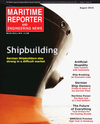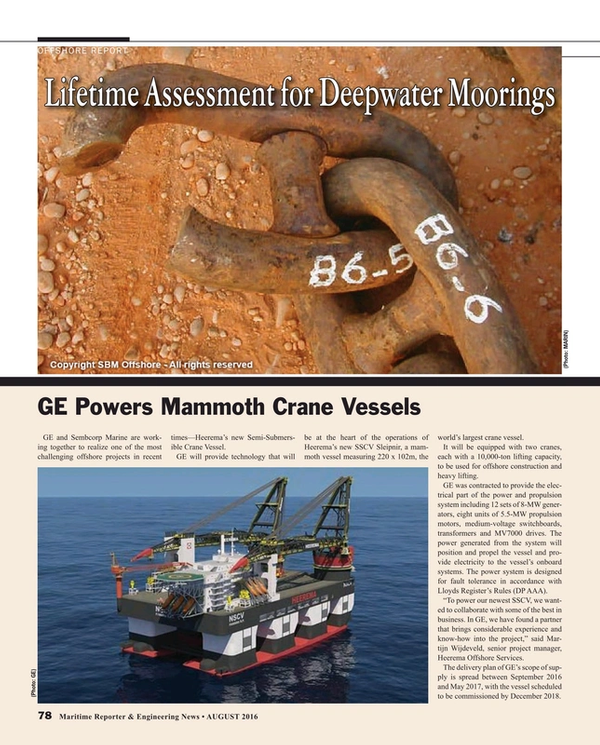
Lifetime Assessment for Deepwater Moorings
by Remco Hageman
Mooring integrity is an important concern in the offshore industry [1]. Mooring leg failures can have significant consequences, such as temporary shutdowns and require unplanned, thus expensive, repairs. On the other hand, an over dimensioned design leads to higher loads acting on the floating facilities and a large investment.
Meanwhile, the development of deepwater projects has led to the discovery of the new fatigue mechanism of ‘Out of Plane Bending’ [2]. This means that the design of moorings requires more detailed analysis to ensure the integrity of the mooring system.
Mooring lines very much behave in a non-linear way. This is the result of, for example, the lifting of the mooring line from the seabed and the loads from the flow around the mooring line. A spectral fatigue assessment is not capable of fully incorporating these effects. A time-domain approach is a more accurate methodology to assess fatigue lifetime.
At MARIN the in-house developed tool aNySIM XMF is used for the time-domain fatigue assessment of deepwater floaters. aNySIM defines mooring lines as a combination of chains, wire ropes and/or synthetic ropes The mooring lines are described using a lumped-mass model, which includes the inertia of the mooring lines, as well as local forces, such as drag acting on the moorings. The result is a mooring fatigue assessment that takes the local dynamics of the mooring lines and the interaction with the production unit fully into account. Time-domain simulation with a fully coupled model with dynamic mooring lines is relatively time consuming. A calculation cluster is used to obtain quick and accurate results for a variety of operating conditions.
The challenges raised by mooring failures are significant and demand improved methodsfor the design of deepwater moorings. Through its time-domain simulation programs, MARIN is seeking to improve the necessary calculation procedures. By simulating the full range of expected environmental conditions, an accurate lifetime assessment can be performed.
[1] K.T. Ma et al. “A Historical Review on Integrity Issues of Permanent Mooring Systems”, OTC-24025, 2013
[2] L. Rampi et al. “Chain Out of Plane Bending JIP Summary and Main Results”, OTC-25779, 2014
The Author
Remco Hageman is Project Engineer Hydro-Structural Services at MARIN, the Maritime Research Institute Netherlands. MARIN offers simulation, model testing, full-scale measurements and training programmes, to the shipbuilding and offshore industry and governments.
(As published in the August 2016 edition of Maritime Reporter & Engineering News)
Read Lifetime Assessment for Deepwater Moorings in Pdf, Flash or Html5 edition of August 2016 Maritime Reporter
Other stories from August 2016 issue
Content
- Artificial Stupidity page: 14
- The Economics of Ship Breaking & Scrapping page: 18
- The Past, Present & Future of the ‘Noon Report’ page: 22
- The European Network of National Maritime Clusters page: 24
- Growing Up Metric page: 32
- Keeping Hulls Clean One Barnacle at a Time page: 46
- Astican & Astander Continue to Invest page: 60
- German Shipbuilders Strong in a Weak World Market page: 64
- DPS & Closing the Door on Unnecessary Risk page: 74
- Lifetime Assessment for Deepwater Moorings page: 78
- Green Ships & Compliance page: 80
- Better Turbocharger Performance, Proven Tech page: 94
- Five Minutes with Paul Switzer page: 106


